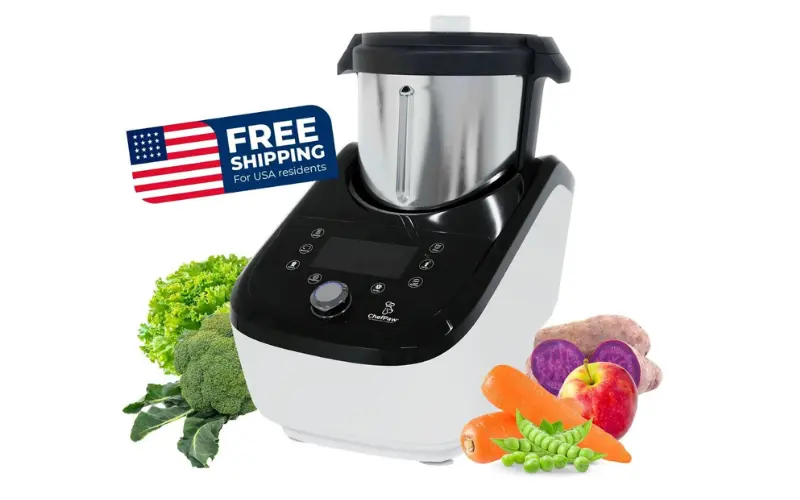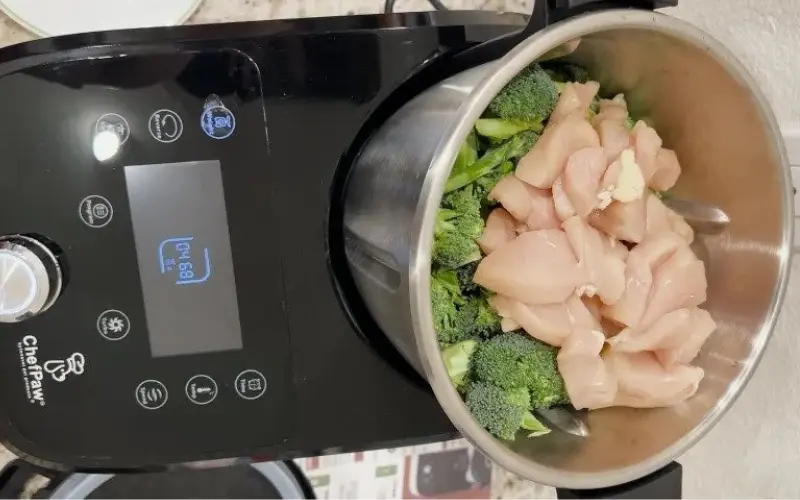Dog Food and their digestive systems, like those of humans, are highly delicate. It goes without saying that once a cute puppy joins your family, you are responsible for ensuring its health and well-being from the moment it inhabits your condo or apartment. A reality check, yet it’s difficult to ignore your furry companion’s endearingly luring brown eyes at the table.

Keep your emotions in check and remain rational. Not all of the food you consume is good for your canine friend. Instead, make it its meal and let it savor it like you do with your own.
While preparing, avoid these harmful ingredients in your dog’s tantalizing recipes.
Ingredients to avoid for your Dog food:
1. Refined Grains
Making homemade dry dog kibble shouldn’t include white flour and white rice when whole grains are equally accessible. The milling and sifting process strips out all the fiber and vitamins B and E essential for your dog’s digestive tract.
Even though refined grains have a long shelf life and are carbohydrate-rich, they are nutritionally incomplete, and when consumed regularly, they may increase the risks of chronic illnesses.
2. Flavor Enhancers
As the caring dog parent, you want your dog to eat to the fullest by adding flavor enhancers. They increase palatability and spike up the dog’s appetite. But you’ll be ignorantly shortening its lifespan.
Stay away from habitually putting rendered fat and fat trimmings in your dog’s kibbles to prevent unprecedented pancreatitis. Commonly used among Asian natives, MSG adds to the list of flavor enhancers to avoid for it’s linked to obesity and allergy triggers in dogs.
3. Artificial Sweeteners
Naturally, your dog has a sweet tooth like your kids do. Most artificial sweeteners like sucralose and stevia are regarded safe when fed in moderation, but large amounts or frequent use pose both addiction and stomach upsets. A caveat for you: xylitol is completely fatal to your dogs and is a popular sugar substitute in gum, candies, peanut butter, ketchup, and barbecue sauces.
Opt for natural sweeteners that will cause no harm to your dog, like raw honey, maple syrup, and blackstrap molasses.
4. Artificial Colors (Food Dyes)
People use Blue 2, Red 40, Yellow 5 and 6, and 4-MIE to give dog food a desirable, colorful appearance. While it’s a good tactic to attract your dog to its meal, it’s been associated with behavioral problems and cancer. Rather be safer than sorry by replacing them with turmeric, paprika, and other dog-safe natural colorings.
5. Avocado (Guacamole)
Avocados are most household staples for salads and weight loss smoothies. But, in dogs, it’s a digestive danger. Guacamoles contain a substance called persin that may lead to abdominal discomfort, vomiting, and diarrhea. While your dog may take little amounts, observe their behavior closely.
6. Grapes, Currants and Raisins
Grapes, currants, and raisins are other ingredients that should never be fed to your four-legged friend. Even one grape, currant, or raisin is lethal and highly toxic.
The tartaric acid and potassium bitartrate in high concentrations damage the kidneys and may result in acute renal disorders. Therefore they need to lack in the countertop dog food maker cooking your dog’s meal.
7. Farmed Fish
Farmed fish are all types of fish reared in ponds, pens, tanks, and unnatural environments. Often, they’re in congested waters and fed low-quality GMO fish pellets. Then, later, the adult fish develop unhealthy fats and possess fewer vitamins and minerals. Unless the farmed fish is from licensed fish processing factories, avoid them at all costs, whether farmed salmons, cod, or whitefish.
However, the best fish for your dog are short-lived wild-caught species. They breed in favorable natural habitats, with the exception of large fish with a long life span that are poisonous. Large fish like Tuna, Swordfish, and tilefish are likely to have fatal concentrations of mercury and other heavy metals.
8. Unsafe Nuts
Some nuts are good for dogs, while others wreak havoc on them. So when your dog drools over nutty treats, ensure that not the unsafe nut types get into its bowl, which include:
- Macadamia nuts- very toxic to dogs
- Almonds and hazelnuts – choking hazards
- Black walnuts- the invisible black mold is highly toxic to the dog
- Pistachios – toxic in large quantities
- Cashewnuts – regular and excessive feeding is toxic
Nonetheless, as much as certain nut types are non-toxic, they are unhealthy snacks for your dog. Most have a high fat content likely to generate obesity and pancreatic complications over time. All the same, feeding your dog salted and seasoned nuts can cause other health issues.
Also, some titbits like chocolate, cookies, candy, and biscuits may have unsafe nuts. Be careful to avoid such kinds of titbits.
9. Alliums
Dogs cannot tolerate all onions, garlic, scallions, leeks, chives, shallots, and spring onions, although they’re kitchen staples. Whether cooked, raw, or powder, no dog can live comfortably when they ingest them. Foods of the allium family have the potential to be completely deadly, even in small amounts – that’s how serious it is.
They create a multitude of health difficulties. At least one of these may occur if taken in small amounts: gastrointestinal inflammation, mouth irritations, nausea, drooling, vomiting, and diarrhea. In large amounts, expect the worst, like an increased heartbeat, body weakness, and hemolysis.
10. Wild Mushrooms
Wild mushroom poisoning is a possible occurrence in your dogs. So, don’t pick any mushrooms you come across along wooden trails and forest grounds to be part of the dog’s evening delicacy.
While few mushrooms worldwide are inedible, it’s hard for you to tell whether the wild mushrooms are safe or extremely dangerous for your home buddy. Hence, I suggest you take all wild mushrooms as toxic for your dogs and only trust the store-bought ones.
11. Unripe Tomatoes
If the kitchen tomatoes are pale green, they’re unripe. And that means they can only be used by you and not your dog. Wait till they ripen and turn completely red to incorporate into the fresh food diet of your dog. If your dog happens to eat a few green tomatoes, watch out for diarrhea, vomiting, and abdominal cramping caused by the tomatine in the tomatoes.
12. Leaveners (Yeast, Baking soda, Baking powder)
Dogs cannot take leavening agents like yeast, baking soda, and baking powder for reasons of gastrointestinal problems. In fact, there’s one major reason to worry about and that’s bloating. Gas accumulates in the stomach and the intestines and may cause them to rupture.
13. Nutmeg
Can your fur family eat nutmeg? The answer is a big no. As little as one teaspoon is toxic enough to quickly raise the heart rate and blood pressure to drastic levels. And worse, your dog may experience seizures and hallucinations. In as much as the spice is flavorful, avert nutmeg poisoning by all means.
14. Chemical Preservatives
Making personalized dog food every day ensures a fresh supply of nutrients for the dog. Sadly, it’s tiring ,and busy days are inevitable, sometimes, when you cannot accommodate dog food preparation. Because of that, preservatives come in handy to make large quantities of cooked dog food last longer for such busy days.

When you implore their use, avoid Butylated Hydroxyanisole (BHA), Butylated Hydroxytoluene (BHT), and Ethoxyquin. Go for the natural preservatives as the alternative, the likes of rosemary oil extracts, unfiltered vinegar, or ginger.
15. Alcohol
Keep alcohol out of dog’s meals when preparing them with your countertop dog food maker. Be it beer, red or white wine, or fermenting bread and other fermented foods. Alcohol triggers alcohol intoxication in your dogs and poor breathing in them.
That’s not Everything, After all!
Cooking homemade food for your dog allows you to have full control over the ingredients and nutritional content of their diet for optimal avoidance of toxicity. However, it’s essential to ensure that homemade food provides all the necessary nutrients through a balanced diet; more than 50 percent of the food should be proteins.
At Chefpaw we give additional crucial dog information and advice. Ultimately, every decision about your dog’s dietary needs should be made in consultation with your pet’s veterinarian or certified nutritionist.

